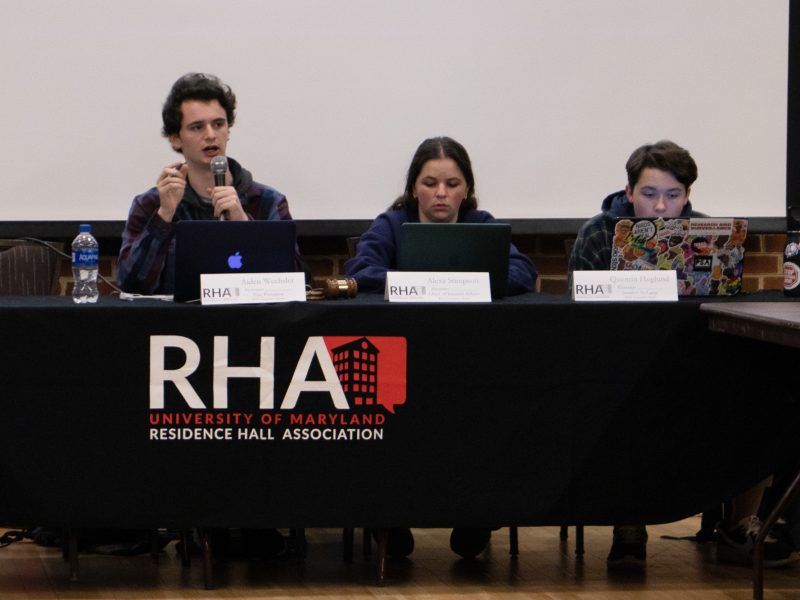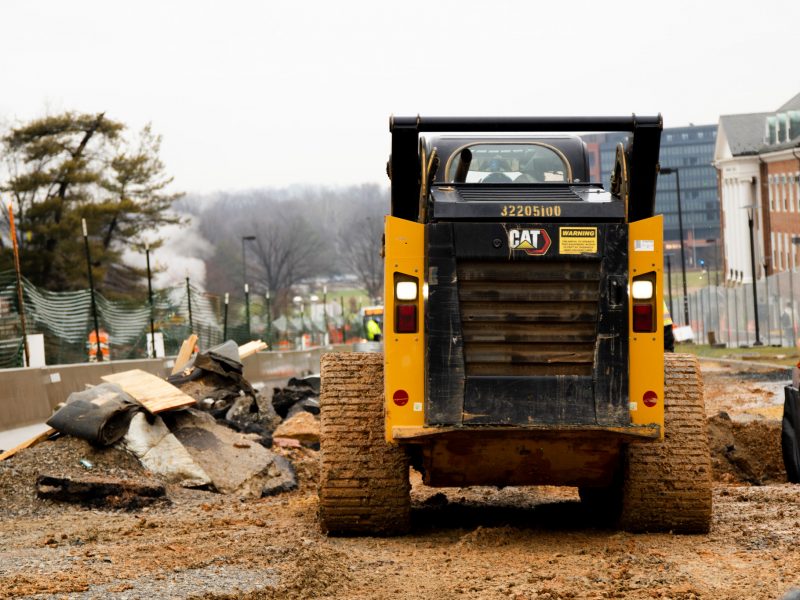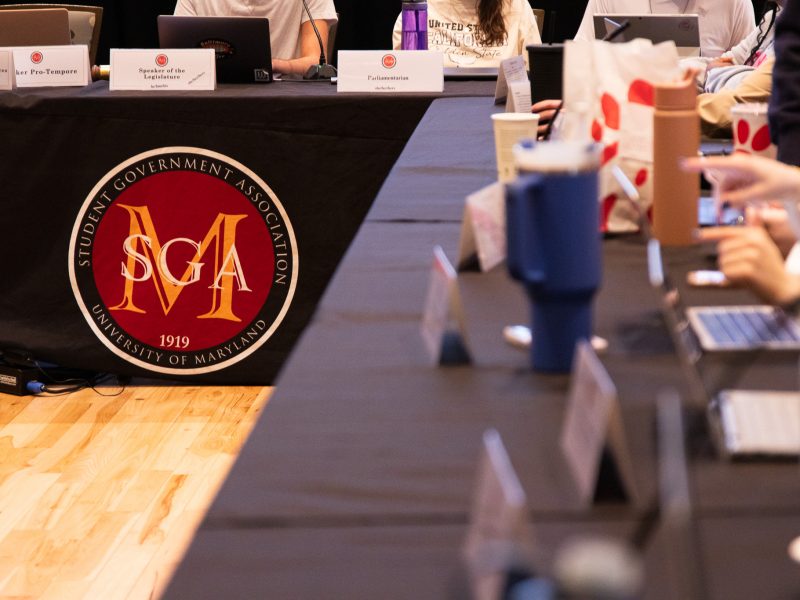Though things might look the same on the outside, the inside of Cole Field House — former home of the Terrapins basketball teams — has changed drastically in the past few months, as part of the $155 million renovation.
The complete plans for the space include an indoor football field, administrative offices, a center for innovation and entrepreneurship and a sports medicine center. The first stage, a $42 million indoor practice facility that will be one of the largest in the NCAA, will be completed by May 2017, said Bill Olen, executive director of design and construction.
The rest of the building will be completed in late 2018 and is still in the design stage.
So far, the seats of the bowl have been removed and made available to interested Terps fans for purchase. The bowl itself is two-thirds of the way demolished, Olen said.
A team of about 60 construction workers are reinforcing the foundations that hold up the roof in order to reinforce the soil, Olen said. Next month, the north side of the building will be removed to create space for a 30-foot wall. This is the stage in which construction will start to be noticeable from the outside.
The demolition of the 70-year-old concrete takes place between 6 p.m. and 4 a.m., when the building is relatively empty. Some of the departments previously housed in Cole are still in the process of being relocated, including the university’s Army ROTC program, which is moving to Reckord Armory in May after commencement.
“Like the project at Tawes Hall where we took the old theatre out and created classrooms and space for the Department of American Studies, this is another project that is an adaptive reuse,” Olen said. “We are taking an existing structure and instead of tearing it down, we are making it useful for now where it hasn’t been used for basketball games for many years.”
This summer, the number of construction workers on the project will increase to about 200, as the project phases out of demolition. This is also when the roof will be replaced.
Besides the indoor training facility, Cole will also house a new research facility partly dedicated to studying traumatic brain injuries. In addition, it will include a clinic with doctors from the University of Maryland School of Medicine in Baltimore and an academic clinic where students studying sports medicine through the public health school will work with both the athletes and people who come to the clinic.
“The research will focus on two major areas — one is in the area of the human brain (specifically, sport-related concussions and the impact of exercise/physical activity on the development and aging of the brain),” Bradley Hatfield, kinesiology department chairman, wrote in an email. “The second major area will be in the area of human motion. This is a complex area involving clinical orthopaedic research on injury prevention and recovery as well as the design of protective equipment.”
For students, experiential learning through participation in research and internships with scientists and medical clinicians will help expand their education, Hatfield said.
Sanad Naber, a junior kinesiology major, believes the renovations will have a huge impact on the university.
“There is no doubt that the Cole Field renovation project will diversify the university’s research, implicating a strong focus on the medical field,” he said. “Life is about growing and improving and getting better, this new collaboration is just UMD’s way of nurturing its students towards a fearless future.”



